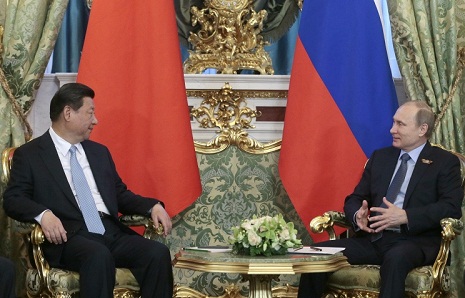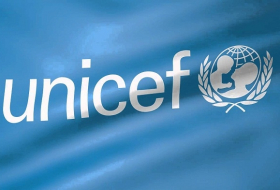The document has been approved by the leaders of the two countries on the basis of bilateral talks held in the Kremlin.
Vladimir Putin said the integration of the post-Soviet trade bloc and China’s Silk Road project opens the way for building a common economic space in Eurasia.
"The integration of the EEU [Eurasian Economic Union] and Silk Road projects means reaching a new level of partnership and actually implies a common economic space on the continent," Putin said
Putin said the Chinese leader and he had paid special attention to this issue at their talks in Moscow.
"The EEU and Silk Road projects can harmoniously supplement each other," the Russian president said.
The Treaty on establishing the Eurasian Economic Union (EEU) was signed by the presidents of Russia, Belarus and Kazakhstan on May 29, 2014 in Astana. The EEU, which came into effect on January 1, 2015, is designed to ensure the free movement of goods, services, capital and workforce on its territory. The EEU currently comprises Russia, Belarus, Kazakhstan and Armenia.
China’s integration project aims to revive the ancient Silk Road route and build a transport, energy and trade corridor between Europe and Asia.
Earlier, Presidential spokesperson Dmitry Peskov told journalists this accord will be fundamental to the cooperation on many projects like the Moscow-Kazan high-speed railway. He noted that "the bilateral joint statement was signed by the heads of state, on cooperation in combining the construction of the Eurasian Economic Union and the economic belt" Silk Road."
"The Chinese Silk Road is an impressive project, of economic, geopolitical and other value," Peskov said. "It`s a very interesting, new, strategic substance of our bilateral relations," he added, and went on to say that the Valdai Discussion club has been studying this project for a long time.
Peskov confirmed that after today`s talks, the Russian President and the Chinese President, who arrived in Moscow on an official visit, are planning to sign "quite an impressive package of documents signed in the presence of leaders or by the leaders themselves during the visit or on its sidelines."
According to him, "this is the case of when leaders voice their intentions about acting in unison in terms of joining the Eurasian Economic Union and the Chinese Silk Road. In his opinion," it is quite an important thing, because here, for example, we have that the Ministry of Transport is signing an agreement today on the Moscow-Kazan high speed railway."
"All these plans that the Chinese have fall in line with the development of the Silk Road," Peskov added.
Moscow-Kazan high-speed railway
TASS reported earlier the Russian-Chinese consortium won a bid to develop the Moscow-Kazan high-speed railway. Under the agreement signed with Russian Railways the consortium is to carry out engineering, planning, area demarcation, and project documentation design for the construction of the Moscow-Kazan-Yekaterinburg high-speed link in 2015-2016.
The Moscow-Kazan High Speed Railway’s total length will stand at around 770 kilometers. Trains may go at a speed of 350-400 kilometers per hour, and the time en route between the two cities could be 3-3.5 hours against the current 14 hours.
The Moscow-Kazan railroad may later be extended to China, connecting the two countries across Kazakhstan. The transport scheme could become part of the route of a new Silk Road project, which is aimed at tying China with the European and Middle Eastern markets.
The total cost of the Moscow-Kazan high speed railroad project amounts to 1.068 trillion rubles ($21.4 bln)
Eurasian Economic Union
EAEC Treaty was signed on May 29 2014 in Astana. The treaty is the basic document that defines the agreement of Russia, Belarus and Kazakhstan to create the Eurasian Economic Union in order to enhance integration, eliminate barriers to the free movement of goods, services, capital and labor, develop coordinated, coherent and unified policy in key sectors of the economy. It also provides revisions to the norms of the CU and CES with the rules and regulations of the WTO.
The new Customs Code is planned to come into effect as of January 1, 2016. The document has been developed as the Customs Union of Russia, Belarus and Kazakhstan is being transformed into the EAEC in 2015.Kyrgyzstan plans to sign the agreement in May of this year.
More about:
















































